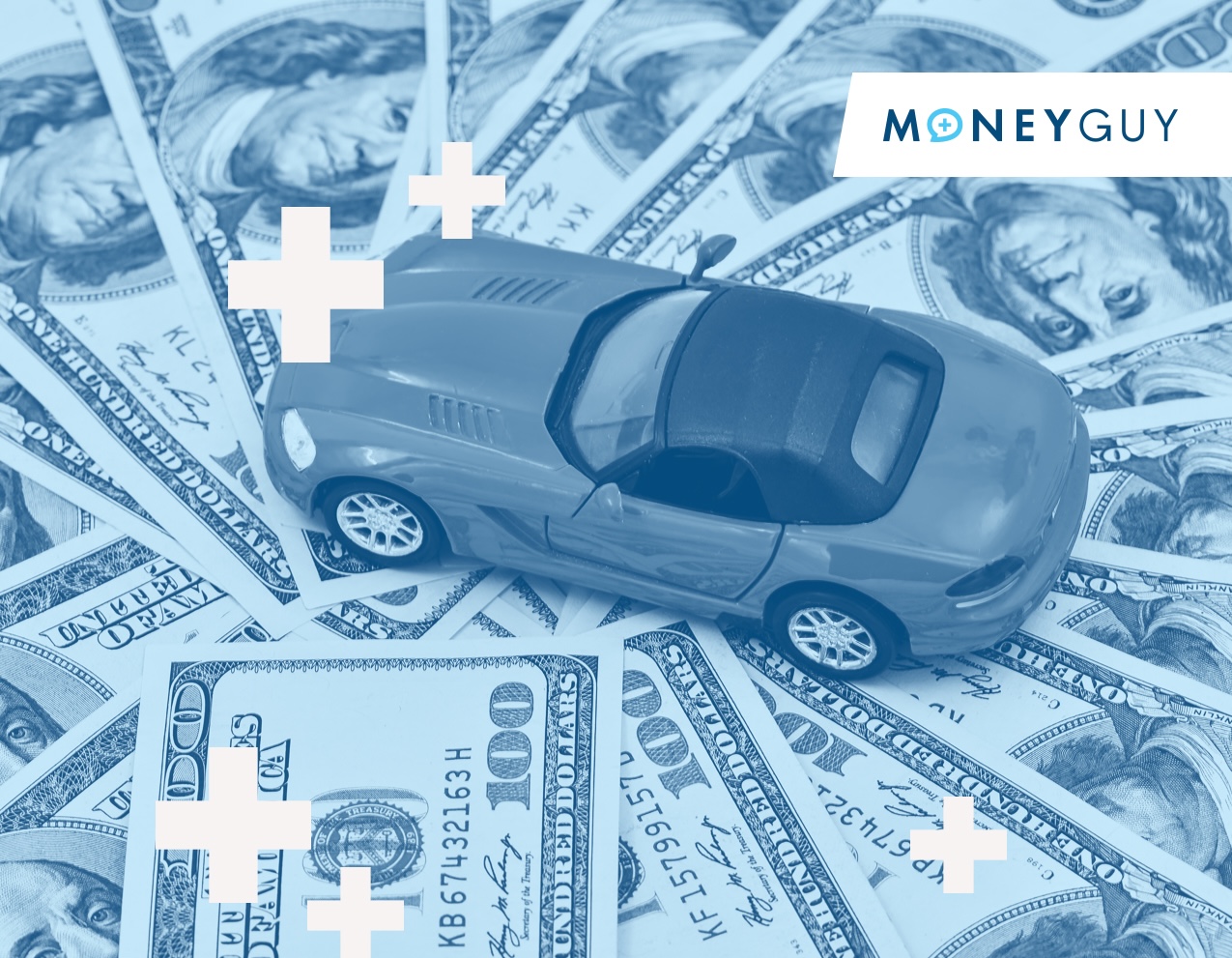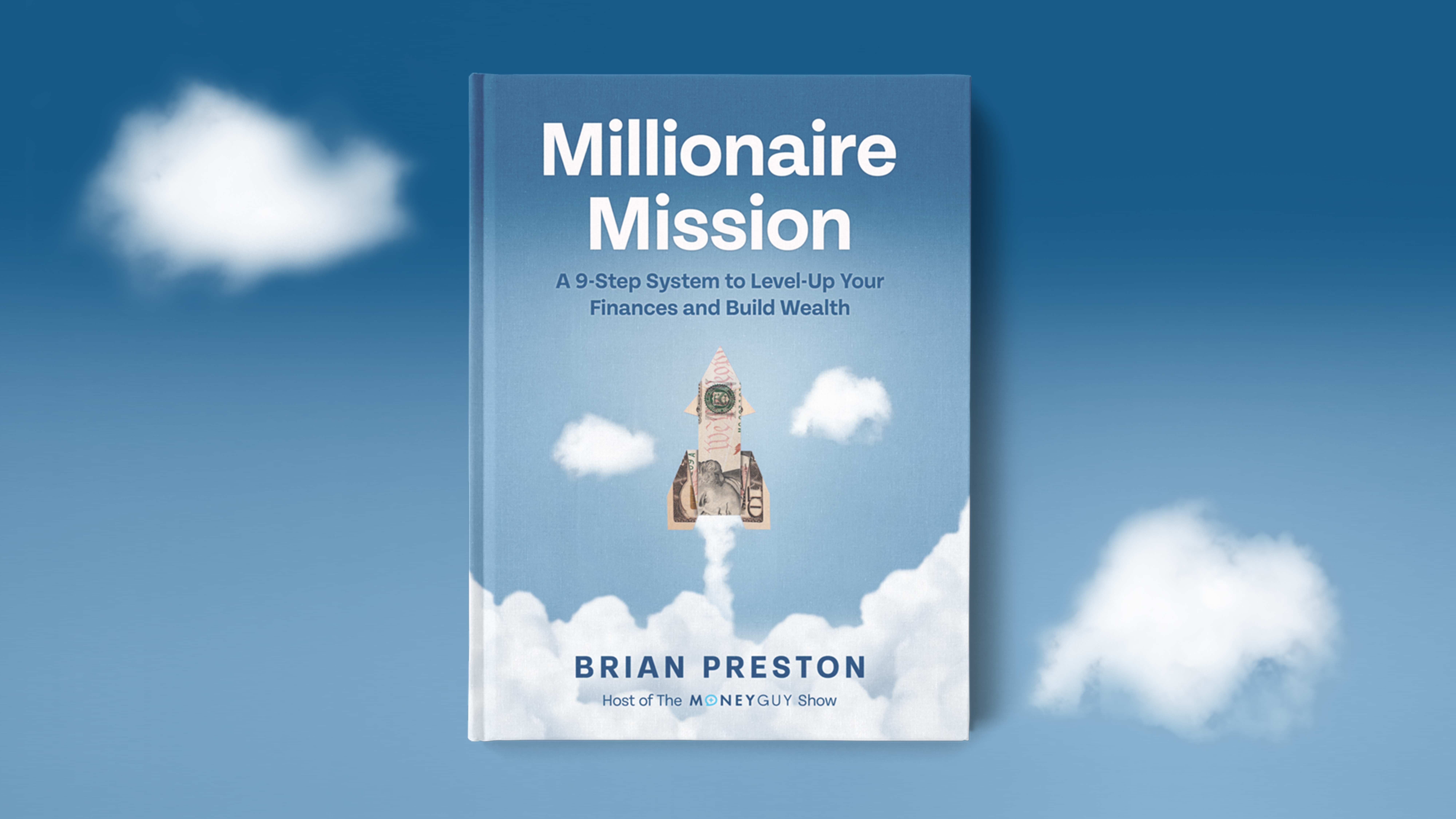
Change your life by
managing your money better.
Subscribe to our free weekly newsletter by entering your email address below.

Subscribe to our free weekly newsletter by entering your email address below.
New data shows more Americans than ever have car payments over $1,000. Is this becoming the new normal? How much could having a car payment of $1,000 be costing you for retirement? For more information, check out our Car Buying Checklist!
Subscribe on these platforms or wherever you listen to podcasts! Turn on notifications to keep up with our new content, including:
Is the normal car payment, Brian? I am excited to talk about this one because this is mind-blowing to me. I cannot get my head wrapped around it because I remember – I still think a thousand dollars is a ton of money. So, to hear the new norm for a car payment is now in four-digit territory absolutely blows my mind.
Well, I mean, this reminds me of my childhood. I can remember my parents talking about, “Did you hear that the neighbors have a thousand-dollar mortgage payment?” You know, so I know things get more expensive. And then there was this trend all over TikTok where people were walking around, sharing primarily at car dealerships that they had thousand-dollar car payments. And then we couldn’t help but notice that there was an article that came through on money that said why thousand-dollar car payments are becoming the new norm. We’re like, “Man, let’s talk about this,” because every decision you make, especially on cars, because these are big decisions – this is not the latte effect, bro. You like to call it the Lambo effect. So, cars are the type of decision that might have a bigger impact than you realize.
Yeah, I think – and you said the reason, right? Cars have gotten more expensive, and now we’re even in this really interesting, unique interest rate environment. We now know that one in six buyers have payments over a thousand dollars. Well, we kind of pulled our team here, and none of us have thousand-dollar payments. So that means that the average American – the non-financial mutant average American – has car payments that are huge. If you look at the average price of a new car right now, it is almost $50,000 for a new automobile. So, we thought this is the perfect opportunity to say, “Okay, if this is what is becoming the new norm, we know here at the Money Guy, we have rules. We have things that are guidelines, benchmarks to help you live your best financial life, because there is a better way to do money.”
Think about this: we have 20/3/8. What is 20/3/8? We have 20% down payment. You don’t finance cars longer than three years because they depreciate like a rock. And you try to keep the payments at less than 8% of your monthly income. And remember, you always want to have more money going into your investments than you do in your car payment. And then the last thing: never, ever, ever – you cannot use 20/3/8 on luxury vehicles. Those are same as cash. So, if the Money Guy rule is 20/3/8, one of the things we want to ask is, “Okay, do average Americans follow 20/3/8? Let’s dive in and investigate.”
So, you said the very first part, Brian, is 20% down when you buy a car. When you buy a new or used car, you want to put 20% down. Are Americans putting 20% down? No. I mean, you can see – truly, I was surprised by this number because it looks like the average American, according to the research we found, was putting down 14%. Now look, this data is probably pulled down slightly because I know there’s also a large percent of people who are buying cars with $5,000 of negative equity. So, guys, how can you get ahead if you’re not putting down the 20%?
Okay, so we’re failing on the 20%. What about the 3? We’re not supposed to finance cars for any more than three years, or thirty seconds for sure. When you look at the average American, the average car loan is for 69 months. That is almost six years. So, we have almost doubled the 3 and 20/3/8. So, Americans are failing miserably at the 3 as well. Yeah, I would pay attention whenever you talk to anybody selling cars. The first thing to ask is, “How much can you afford in your monthly car payment?” And the reason they play this game is because if they can just extend out your loan – I mean, I’ve heard about – obviously, we’ve got 6-year loans, 72 months, because nobody’s really doing 69 months. It just means that we have more 72 and now the new 84-month loans that are skewing this data longer and longer.
So, Brian, I think that both of these are bad. They’re not putting 20% down, and financing for 6 is about the next one I think is the one that hurts a lot because you know that the 8 and 20/3/8 is that the total of all of your car payments should not exceed 8% of your gross income. Well, if we think about the median household income right now being just a touch under $71,000 and the average car payment right now being $7,733, that means that the average American is spending 12% of their median income – twelve percent of their income – on car payments. So, they are blowing through the 8 in the 20/3/8. And then if you think about those with a thousand dollars, they’re around 17% of the median household income. And here’s something that we – and look, this is a scary thing. This is one car.
What we said – we’re using median household. If you have two people with two separate cars, if one’s not paid for, this number very easily could be 24% to 34%. I mean, think about how big these numbers can be if you multiply by two. Be careful, guys. The 8% is to ensure, just like we talk about with mortgages. We don’t want you to be house-rich, life-poor. These decisions with your cars can make you where you might look snazzy, and you might look cool, but you’re trying to impress people that more than likely actually don’t care. I’d rather you invest for your future self. That’s a great segue, Brian, because the question people ask is, “Okay, well, why – why – why does this matter? You say all the time it’s a Brian Prestonism that automobiles can be Napalm for your finances. But is that really true? It’s just a car. It’s just 69 months. It’s just a little bit more than 8%. Why does it matter? Why is it significant?” I think we should walk through that.
Yeah, we want to do one of the Money Guy case studies. And I thought this one worked out perfectly. I couldn’t believe how well this played out because, first of all, here’s an exercise, and for those who are not watching on YouTube and you’re listening to our podcast, here’s the scenario: What would you rather drive? A brand-new BMW 5 Series or a Nissan Versa? And I want to tell you, I mean, so this is the decision, but there’s a lot going on with this slide. Yeah, and so the question is, I think that most people, when they look at this, it’s obvious. Most people, right? They’re gonna jump to ‘Oh, the BMW 5 Series,’ right? That’s because I’m going to look so that’s what you can go, that’s what you’re so much cooler to go and trying to impress people who really don’t care. That’s what you’re going to lean into. But here’s something I want to remind everybody: If you want a BMW 5 Series to impress people – and I know a lot of you say, ‘I’m a car person, I just like the actual experience’ – even if you’re a car person, the only way you can have a BMW is if you can essentially pay cash.
But we know from the facts, to have a thousand-dollar car payment, to have 69 months being the average now for what people are financing cars – there’s a lot of people buying BMWs that are financed. Now, you’re saying, ‘Why Nissan Versa?’ Nissan Versas, we’ll show you in a minute, is much more reasonably priced and it fits in perfectly with what the household income in America is. And I also thought it was great because on our staff, in our leadership on staff, somebody who’s a homeowner, has a growing family, has money growing in their army of dollar bills – they actually drive a Nissan Versa. So this is not just theoretical. We actually have someone on the team that is living their best life driving this Nissan Versa.
And so the natural thing that you’re setting up there, Brian, is that these two cars are not equal when it comes to price, when it comes to how much you are going to pay for these. They are not on the same playing field. If you look at a BMW 5 Series sedan right now, it will cost you $58,000. The Nissan Versa, on the other hand, just a touch over nineteen thousand – completely different worlds. But, well, especially for your financials, let’s talk about what this one decision, one consumption decision. So they catch you on a bad day, your car broke down, and you’re like, you know what? I’m driving to the dealership and I’m gonna walk out with a brand-new car so I don’t have to deal with this anymore, and your ego gets in the way. What is this one decision? What’s the opportunity cost?
So, let’s do a case study. Let’s take Brogan and let’s say that Brogan is 30 years old and Brogan wants to buy the BMW 5 Series. And Brogan is going to do what the average American does. He’s going to spend 17 percent of his median household income. So, he’s gonna have a thousand-dollar-a-month car payment and he’s going to take 5.8 years or 69 months to pay it off. Well, because he’s spending so much on this car, he has no extra money to invest. So, right off the bat, Brogan is like, broken every single one of the Money Guy Rules, right? Because this car should be same as cash. He didn’t even put any down payment on it and he’s financing it for close to six years. This is a disaster.
Now, let’s look at Brogan’s counterpart, Monique. Monique is also 30, but she decides that she’s going to buy a Nissan Versa. She’s only going to have eight percent of her income go towards her car payment, which will be about $472 per month. She’s going to pay off the car inside of three years and she’s gonna put that money to work while they are working through this five-point-eight-year period. So, what that means is the additional number from $472 to a thousand, she’s going to save. And then, once she pays off her house in three years, for that remaining amount of time, she’s also going to be saving the thousand dollars a month. She is going to have her dollars go into her army of dollar bills instead of going into a fancy shiny car. I think that’s worth echoing.
So, ‘invest the difference’ in this situation means that for the 36 months that she does have a car payment, the additional spread between a thousand dollars to her car payment is $528 a month. She’s going to be investing for the first three years, and then you take it – she’s gonna have a full thousand dollars a month to invest for the remaining 33 months that Brogan’s still paying off his auto loan. That seems like there’s a lot of money that’s going to the army of dollar bills versus just trying to have the nicer car.
So, here’s what ends up happening: by the time Brogan has paid his car off – because remember, he paid it off over 69 months – Monique now has an extra sixty-five thousand and ninety dollars safe retirement. Again, they’re 30, so we’re assuming a nine percent annualized rate of return here. So, that’s $65,000 over this very short period of time that she is now ahead of the game, ahead of Brogan. They both have paid-off cars, but Monique actually has money working for it. Yeah, it’s kind of amazing. I mean, we’re talking about less than six years here, and we’ve already got a $65,000 difference. But we know that’s only the beginning. This is a big, big decision.
So, we actually said, ‘You know what? Let’s go out there. Here’s a great teachable exercise. Let’s go out to the Money Guy Community. We put this out on the YouTube Community page. I would encourage you always go out there and check that Community page to see what we have going on. And here’s what we found out: We laid up the question, we said, ‘Q&A tomorrow at 10 A.M. New data shows one in six buyers have car payments over a thousand dollars. We have a case study showing exactly how much that decision could cost by retirement using real cars. We have two 30-year-olds with the median income, but one follows 20/3/8 and the other spends over a thousand dollars a month. How much does that one decision cost by age 65?’ And the results were – you said about three percent of you guys said, ‘Okay, about eighty thousand dollars.’ About 15 percent of you said, ‘No, that decision is going to be about $129,000.’ 32 percent of you said, ‘That’s going to be an $896,000 decision.’ And then about half of you – fifty percent of those that responded to the survey – said it’s gonna cost over half a million dollars, $514,000, just in that one decision. Well, here’s the big reveal. I mean, it’s big. I mean, you guys, the majority of you said it was over $500,000. The actual correct answer was $896,000.
Guys, imagine that this one decision is almost a seven-figure difference on where your future self will be. I think it’s so cool, Brian. You know, we have these koozies we talk about all the time that say, “This one-dollar beer cost me 88 cents.” Think about this: What if that one BMW, that one automobile decision, that one fancy shiny decision that you decided to make at age 30, cost your retired self, cost your future self, almost a million dollars? These seemingly small, seemingly insignificant decisions can have huge impacts on your financial life. There was even this, and this is another reason I love for all of you guys to go check out our community page on YouTube, is that there was one of our listeners from the audience who said, “How much does that cost, an extra decade of work?” is the brutal honest answer.
So, think about one decision. If you’re not going to think about it just in terms of, “This is almost a seven-figure difference,” think about it in terms of labor and your time. I mean, it really is something that probably sets you back over a decade of additional work from this one decision. So, think about consumption differently, guys, because here’s the big takeaway: I want you to understand that being rich is so much better than looking rich. But we want to make sure you don’t make these mistakes. So, I would encourage you to go to moneyguy.com/resources. We actually have a great car buying checklist that will keep you from putting your financial life in the ditch. That’s right, cars can be financial napalm unless you follow the right rules, unless you do it the right way. And the car buying checklist is exactly that. It’s there to help you navigate that well.


Car Buying Checklist
Here’s how you can buy a dependable car that won’t break the bank. Our free checklist walks you through the…
View Resource
Home Buying Checklist
Before you make one of the biggest purchase of your life, make sure you're ready with our Home Buying Checklist.…
View Resource
Refinance Guide
Learn everything you need to know to do it right. This guide breaks down how refinancing works, when it’s a…
View Resource


How about more sense and more money?
Check for blindspots and shift into the financial fast-lane. Join a community of like minded Financial Mutants as we accelerate our wealth building process and have fun while doing it.




It's like finding some change in the couch cushions.
Watch or listen every week to learn and apply financial strategies to grow your wealth and live your best life.
Subscribe to our free weekly newsletter by entering your email address below.